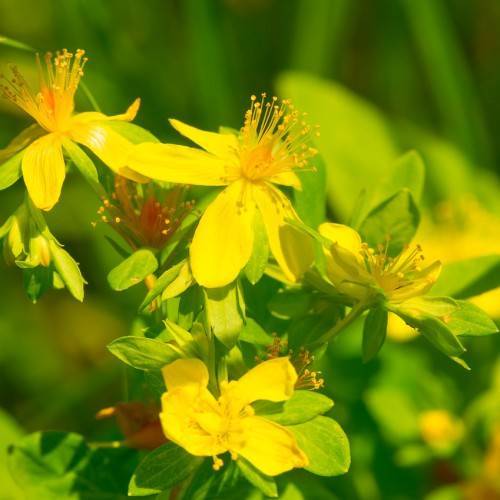
great St. John's wort
Hypericum pyramidatum
Cycle:
Herbaceous Perennial
Watering:
Average
Hardiness Zone:
4 - 8
Flowers:
Flowers
Sun:
Full sun,part shade
Leaf:
Yes
Growth Rate:
High
Maintenance:
Low
Drought Tolerant:
Yes
Salt Tolerant:
Yes
Invasive:
Yes
Care Level:
Medium
watering
Great St. John's wort prefers evenly moist soil, so it's important not to let the soil dry out completely. Water deeply but infrequently. Depending on the weather and stage of the plant's growth, it's recommended to water once every 1 to 2 weeks. When watering, saturate the soil deeply and then allow it to dry out slightly before watering again. During very warm weather, additional watering may be needed.
sunlight
Great St. John's wort (Hypericum pyramidatum) thrives best when it receives 6-8 hours of direct sunlight per day. It prefers sunny and slightly shaded sites that are not overly humid. The optimum time of day for sunlight depends on the location. In late spring and summer, when the sun is at its highest, from approximately 10am to 2pm, plants located in an area with northern exposure should receive full sun. In areas with slightly cooler temperatures, in contrast, the foliage may be able to withstand longer exposure to direct sunlight, from 8am to 4pm. In the late fall and winter months, when the sun is lower in the sky, great St. John's wort should receive 4-6 hours of sunlight. This can be provided from 9am to 3pm. Too little sunlight may cause the foliage to become suspended, while too much may cause burning of the foliage.
pruning
Great St. John's wort (Hypericum pyramidatum) should be pruned during the late winter or early spring if necessary. Pruning should be moderate, as this species tolerates very little pruning due to its low tolerance for stress. Dead and damaged branches should be removed and the remaining canes should be cut back to the main stems. This species should also be thinned out to help encourage healthy growth and maximize flowering potential.
